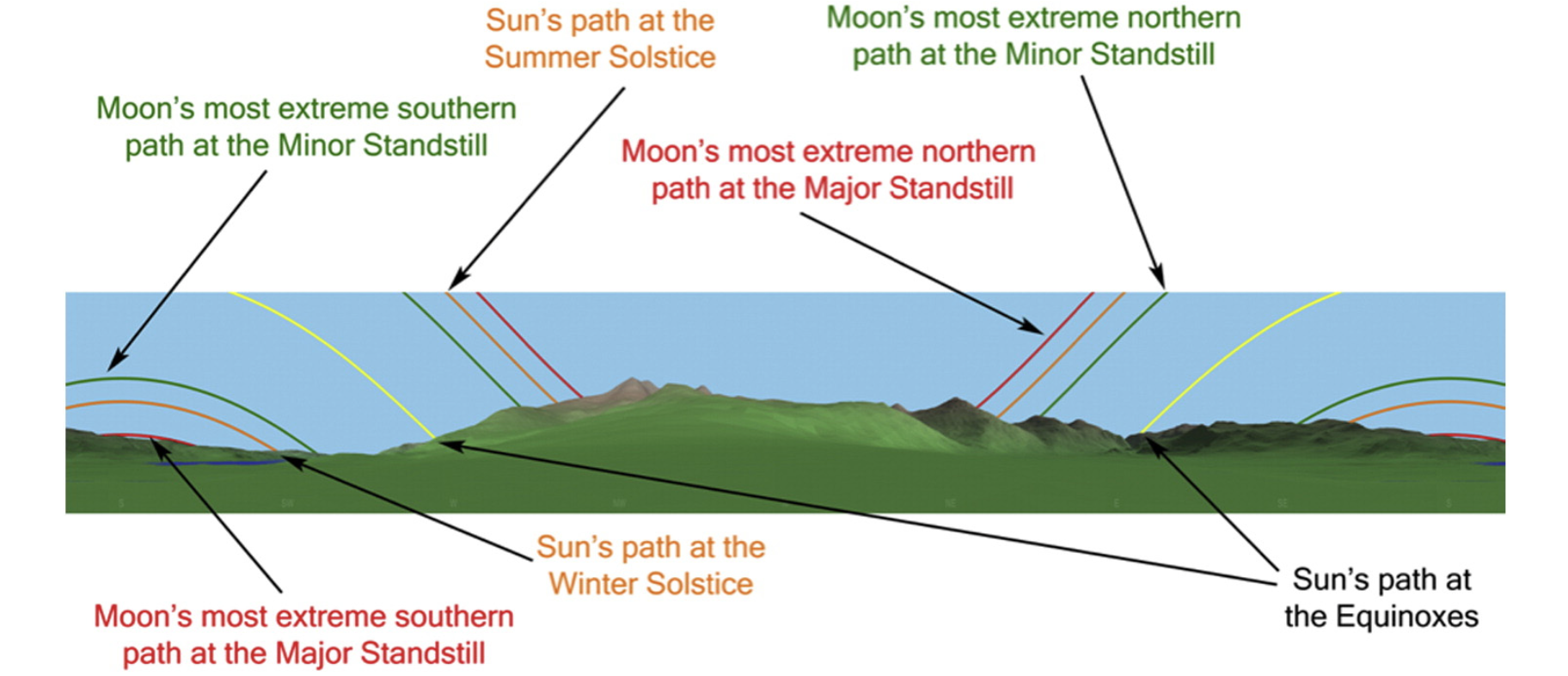Scientists have finally shown that these ancient stones align with the Sun and Moon
For the first time, Australian researchers have found statistical proof that the earliest standing stone monuments in Britain, called the great circles, were specifically constructed 5,000 years ago to line up with the movements of the Sun and the Moon.
These strange structures, erected in two locations in Scotland, pre-date Stonehenge by some 500 years, and initiated a 2,000-year-long practice of building astronomical monuments in the region.
"Nobody before this has ever statistically determined that a single stone circle was constructed with astronomical phenomena in mind - it was all supposition,"says project leader Gail Higginbottom from the University of Adelaide.
"This research is finally proof that the ancient Britons connected Earth to the sky with their earliest standing stones, and that this practice continued in the same way for 2000 years."
Higginbottom and her team examined the oldest great stone circles built in Britain - one in the village of Callanish, on the Isle of Lewis, and one in the village of Stenness, on the Isle of Orkney.
These great circles of Callanish and Stenness were likely constructed around 3000 to 2900 BCE, using tall, thin slabs of stone.
To get a better idea of what they would have originally looked like, the team created 3D landscape models of the circles, plus the surrounding landscape and the astronomical phenomena that would have been circling above.
Using these, they discovered that the sites share a combination of astronomical and landscape cues that were also found at smaller Bronze Age sites built more than 1,500 years later, on the nearby Scottish islands of Coll, Tiree, and Mull.
What’s particularly impressive is that the Standing Stones of Stenness were actually built in the exact reverse order of the Callanish Stones.
At the Callanish site, the team found a specific pattern in the stones and the landscape, identifying seven different 'cues' that distinguished what they classified as a "classic" layout.
These cues include the fact that the water occurred in the south, and that the northern horizon was the closest, while the southern horizon was the most distant. The highest points of the horizon were marked by distinct mountains or hills, and the summer and winter solstitial Sun and standstill Moon tended to rise out of, and set into, these high points.
To figure out the position of the Sun and Moon at certain times, the original builders would have used a celestial sphere - an imaginary sphere that’s viewed from Earth and against which the celestial bodies are projected in the sky.
In a typical celestial sphere, Earth is located at the centre, and the poles of the celestial sphere are aligned with the poles of Earth. A celestial equator runs along the celestial sphere along the same plane as Earth's equator.
The celestial sphere has been a key tool for astronomers for centuries, because it allows them to track the constant movements of stars and planets, even if they can only see half the sky above the horizon at any given moment, due to Earth’s rotation.

When the team examined the Standing Stones of Stenness, it was revealed to be an exact topographical 'reverse' of the Callanish site, with water situated in the north, and the southern horizon being the closest, while the northern horizon was the most distant.
Looking at the Callanish and Stenness sites, and the smaller sites that came after them, the team found that around half the sites featured the classic pattern, and the other half had the reverse.
"[A]t 50 percent of the sites, the northern horizon is relatively higher and closer than the southern and the summer solstice Sun rises out of the highest peak in the north," Higginbottom explains. "At the other 50 percent of sites, the southern horizon is higher and closer than the northern, with the winter solstice Sun rising out of these highest horizons."
The researchers then came up with two statistical measures called cross-correlation tests, which allowed them to compare the stone directions at the sites to the direction of astronomical phenomena crossing the horizon.
Combining their examination of 3D landscape reconstructions of each site, cross-correlation tests, and past statistical findings, they report that the likelihood of the monuments being astronomical is above 97.87 percent for Stenness, and 97.87 percent for Callanish.
So the evidence suggests that 5,000 years ago, the ancient people of Scotland had managed to weave the sky and the land together in their stone circles to reflect the complex movements of the lunar and solar cycles at different stages, and this practice was continued for at least another two millennia elsewhere in the country.
"These people chose to erect these great stones very precisely within the landscape and in relation to the astronomy they knew. They invested a tremendous amount of effort and work to do so," says Higginbottom.
"It tells us about their strong connection with their environment, and how important it must have been to them, for their culture and for their culture's survival."
The research has been published in the Journal of Archaeological Science: Reports.


No comments:
Post a Comment